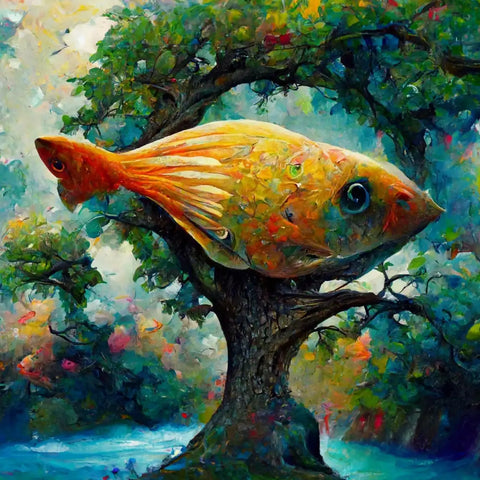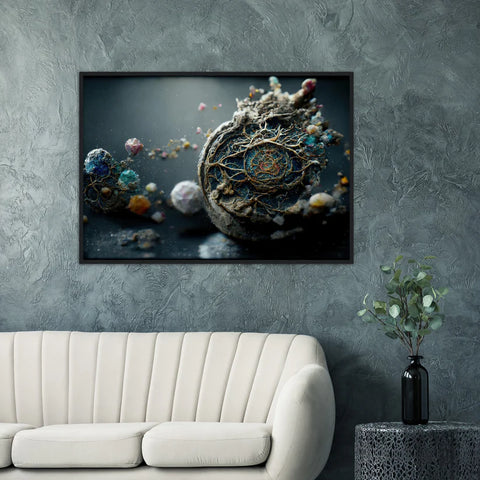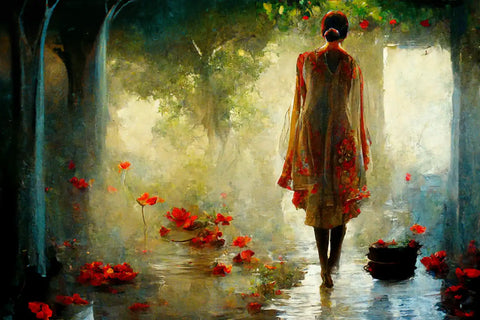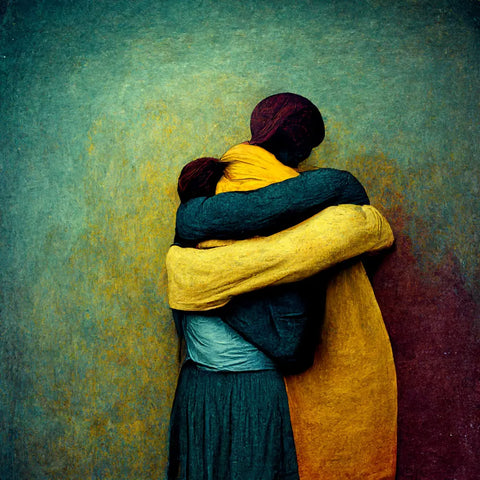Have you ever asked yourself what is synthography?
Synthography (aka. AI Art) is a new art form and medium of expression that allows users to convert ideas into images using AI. Unlike photography, which captures real-world moments using light and photons, synthography synthesizes images based on words and ideas, creating pictures depicting literally everything one can imagine.
This is the period in history when with AI as your brush and imagination as your canvas, you can create stunning visual representations of your wildest ideas and dreams.
In this article, we will explore what it is, its applications, why it has grown so popular recently, and the implications it has for the future of art.
1. Definition of Synthography
According to Wikipedia, synthography is the method of generating digital media synthetically using machine learning. This is distinct from other graphic creation and editing methods, in that synthography uses artificial intelligence art text-to-image models to create synthetic media. It is commonly achieved by prompt engineering text descriptions as input to create or edit a desired image.
2. The Etymology of Synthography
The word "synthography" ((noun) synth·og·ra·phy | ˈ\sin-ˈth tɒɡrəfi/) is made up of two components: "synth," which comes from the Greek word "synthetos", meaning "put together" or "combined," and "graphy," which comes from "graphia", meaning "writing" or "drawing."
While "synth" is often used in words related to synthesis or artificial production, such as "synthetic," "synthesize," or "synthesizer," "graphy" is commonly used in words related to the process or art of recording or reproducing images or information, such as "photography," "cartography," or "calligraphy."
3. The History of Synthography
While there may not be a specific history of Synthography as a term or field, its evolution is closely tied to computer graphics and image synthesis development.
Image synthesis has been around since the 1960s when researchers began working on creating computer-generated images using mathematical models.
During this time, pioneers like Ivan Sutherland, Ed Catmull, and John Whitney made groundbreaking work laying the foundation for modern computer graphics.
As the technology evolved, the field of artificial intelligence began to intersect with image synthesis. Recently, advances in deep learning algorithms and generative adversarial networks (GANs) have enabled us to create highly realistic and creative images, making synthography important enough to keep an eye on it.
4. How Does Synthography Work?
Synthography uses artificial intelligence algorithms to generate digital images based on textual input.
The process typically begins with fine-tuning the prompt or textual description, which serves as the basis for the generated image.
The prompt can be anything from a few words to a long paragraph, and it can describe a specific object, scene, or concept.
Once the prompt has been selected, it is passed to a neural network-based model, which uses machine learning algorithms to generate an image corresponding to it.
The model typically consists of two components: a generator and a discriminator.
The generator creates the image based on the prompt, while the discriminator evaluates the image to ensure it is realistic and corresponds to the prompt.
While the specific details of synthography models can vary depending on the implementation, the general process involves using advanced machine learning algorithms to generate synthetic media corresponding to textual input.
5. Reasons for Its Popularity
Generative art is becoming increasingly popular due to the advancements in AI and machine learning technologies, allowing individuals to bring their visions into existence swiftly.
These pioneering tools empower artists and designers with greater freedom of exploration, enabling them to make ideas tangible within seconds.
Synthography has opened up doors for creatives everywhere by providing accessibly priced means of generating artwork from scratch - so much so that its demand continues to grow at rapid rates!
Top 5 reasons why people love synthography:
- It offers a new and exciting way to create digital art and design.
- It allows endless possibilities in terms of what can be depicted and created.
- It has practical applications across various industries, making it a valuable tool for professionals.
- It offers a faster and more efficient way to create digital content with high-quality results.
- It represents a new frontier of art and technology, attracting those interested in cutting-edge creativity and innovation.
6. Applications of Synthography
The applications of synthography are vast, yet it's still too soon to imagine its full potential.
By leveraging generative imagery, designers and creators can create digital content faster with significantly improved quality.
AI-generated images can also be helpful for various purposes, including creating synthetic data for machine learning applications, generating game assets, producing dynamic models for architecture visualization, and enhancing medical imaging.
Additionally, synthography can be used to automate tasks for businesses, such as product catalogues, 3D modeling, and data visualization. As its capabilities become increasingly refined, the potential applications of synthography will only grow.
7. Implications for the Future of Art
The rise of synthography has significant implications for the future of art. Using AI algorithms, artists and designers can explore new ways of creating and expressing themselves, leading to new forms of art that were previously impossible.
At the same time, it can reduce both the cost and waste associated with traditional image-making.
With the ability to generate digital content quickly and with greater accuracy, businesses can save time and resources associated with manual production processes.
Another potential implication of synthography is its ability to help level the playing field for artists who lack talent or access to expensive software or hardware.
By providing an accessible way to create high-quality art, synthography could allow more individuals to participate in art creation.
8. Examples of Synthographies Created By Us Here At Proaiart
Artworks created using AI technology span various genres and styles. Here are just some examples:
Everyone is a Genius
Inspired by Albert Einstein's quote, "Everybody is a genius. But if you judge a fish by its ability to climb a tree, it will live its whole life believing it is stupid." This artwork seeks to challenge traditional ways of thinking and understanding the world.
See "Everyone is a Genius" in our shop:
The Universe of Mind:
The Universe of Mind is an ultra-detailed AI artwork that explores the theme of mental health awareness. This mystical universe representation features an eye-like globe that serves as a metaphor for the mind's inner workings.
See "The Universe of Mind" in our shop:
Coming Home to Myself is an AI artwork exploring the idea of finding oneself in times of darkness. This piece is a stunning representation of inner peace, resilience, and hope.
See "Coming Home To Myself" in our shop:
Abstract Hugs 2 (Series)
Abstract Hugs is a series of 4 artworks that captures the essence of self-love and unity through stunning AI-generated visuals. This series features two individuals, each hugged in on themselves, coming together in a symbol of unity and connectedness.
See "Abstract Hugs" in our shop:
At Proaiart Gallery, we are proud to showcase the power of AI-generated art with our synthographies. Our team of talented artists and engineers have created a wide range of unique and captivating pieces using cutting-edge AI technology.
9. The Future of Synthography
The future of synthography is bright and full of potential. Much like when camera photography first emerged in the 1800s, synthography can revolutionise how we think about art and creativity.
While it has already made waves in the creative community, only time will tell if AI art will become a mainstay or another passing trend.
10. Conclusion
In conclusion, synthography has emerged as a fascinating new art form that has captured the attention of artists, designers, and enthusiasts around the world.
If you want to dive deeper into the world of AI art, be sure to check out our shop, where you can find a wide variety of synthographies created by us here at Proaiart Gallery.
So, what do you think about synthography? Do you believe it has the potential to revolutionise the world of art? Let us know in the comments below!








Never had heard about this!!!! Like it very much.